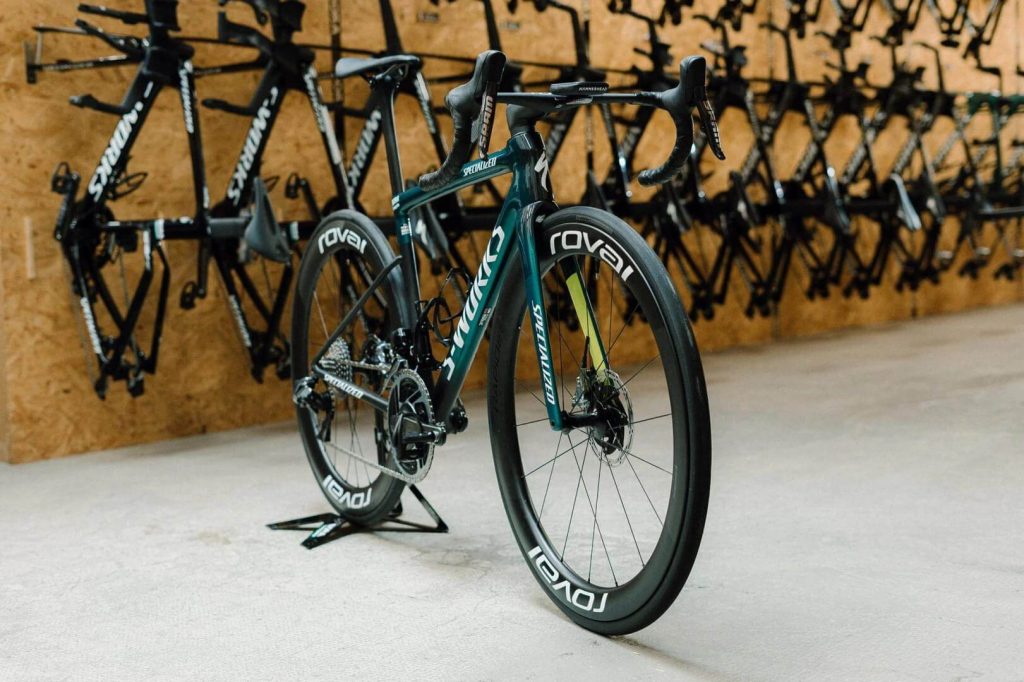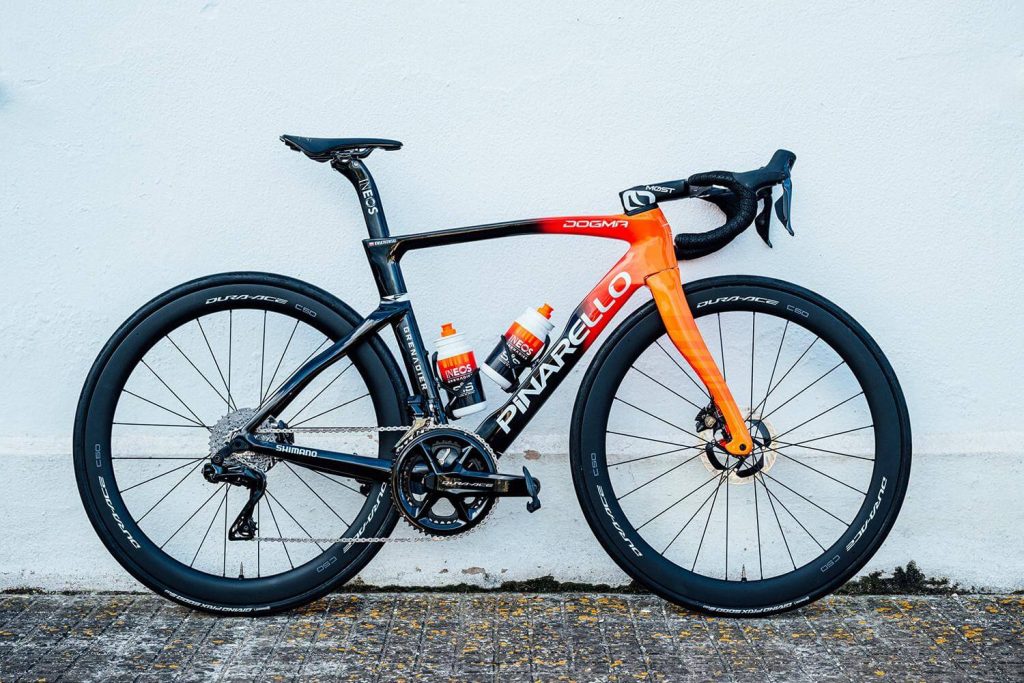WorldTour bicycles are the pinnacle of cycling technology and the epitome of efficiency-oriented design. Despite all manufacturers striving to achieve the same goal – to create the fastest and lightest bicycles, some of them are closer to the minimum weight of 6.8 kg set by UCI rules than others. So, how much do WorldTour bicycles weigh? Let’s go through everything step by step.
Interestingly, all the weighed bicycles of the teams turned out to be significantly heavier than one might expect… Out of the 18 weighed bikes, only one weighed less than 7 kg, and even then only by a few grams.

This is fundamentally different from what it was 5 years ago, when the weight of the bicycle was constantly below the minimum limit of 6.8 kg, and weights had to be added in the area of the bottom bracket or inside the seat post to bring it up to the allowed minimum.
There are several technological factors that have partly contributed to this widespread increase in weight, such as disc brakes and non-tubular tires. There is also a trend to focus on other aspects of the bicycle’s characteristics, for example, aerodynamic optimization has allowed less attention to be paid to the weight of the bicycle.
Read on to find out which team uses the lightest bicycle in the peloton.
Table of Contents
- What does the difference in weight give?
- Bora-Hansgrohe claims the lead
- Can teams reduce the weight of their bikes to 6.8 kg?
What does the difference in weight give?
The difference of almost a whole kilogram between the lightest and heaviest WorldTour bicycles seems significant, but does it give a substantial advantage in the race?
We calculated the numbers and calculated the difference it would make to a 70-kilogram cyclist on the most iconic climb of the Tour de France – Alpe d’Huez, at a power of 6 W/kg.

Although for us mere mortals, such numbers may not seem convincing, this difference is quite enough to seriously affect the outcome of the race. With equal power, a heavier bike will climb 26 seconds slower than the lightest one. This can become a decisive factor between victory and defeat on the climb.
The difference is four watts, which is not a significant increase in power for a single climb. However, if you increase your speed on a stage with several climbs or throughout the entire Grand Tour, the overall additional energy costs will already be quite substantial.
Bora-Hansgrohe claims the lead
Visiting the team buses at the Tour Down Under provided an opportunity to learn the weight of each bicycle from the men’s WorldTeams participating in the race. It is important to note that these are not the manufacturer’s declared figures for each bike, but rather the actual weights of the bikes on which the teams raced in Australia.
Without further ado, here is the list from the lightest to the heaviest!

It is important to note that for some of these teams, aero bikes were weighed, which naturally are heavier than climbing bikes. For example, EF Education-EasyPost has the lighter Cannondale SuperSix EVO at their disposal.
Can teams reduce the weight of their bikes to 6.8 kg?
Several teams have opted out of specialized aero and lightweight machines, preferring to use versatile bikes that blur the lines between these categories. The weight of such models is around 7 kilograms, which is a significant disadvantage compared to teams that can switch to a super-light bike for mountain stages. The question is whether these teams can go on a diet to bring their bikes closer to the elusive 6.8 kg limit.
We analyzed the equipment of one of these teams – Ineos Grenadiers – and found out how much weight they could drop.

First, where significant weight reduction potential is seen, is with the Shimano Dura-Ace power meters. They weigh 750 grams, while switching to something like a dual power meter from Rotor would save over 200 grams. Additionally, Dura-Ace pedals are nearly 100 grams heavier than Speedplay Nano Ti. For the Ineos setup, only these two solutions would allow for a bike weight reduction to 7 kg.
It’s worth noting that another source of excess weight could be the saddle. There are many saddle options on the market that are 100 grams lighter compared to the models chosen by riders. While comfort is a key factor for some teams, lighter versions of the same shape are still available, although not in all cases.
It’s not worth spending too much time finding equipment options that teams can use (if sponsors allow) to significantly reduce bike weight. For many cycling teams, equipment weight depends on the sponsor, while for others, the weight of the component is not necessarily the deciding factor compared to comfort or aerodynamics.
Leave a Reply